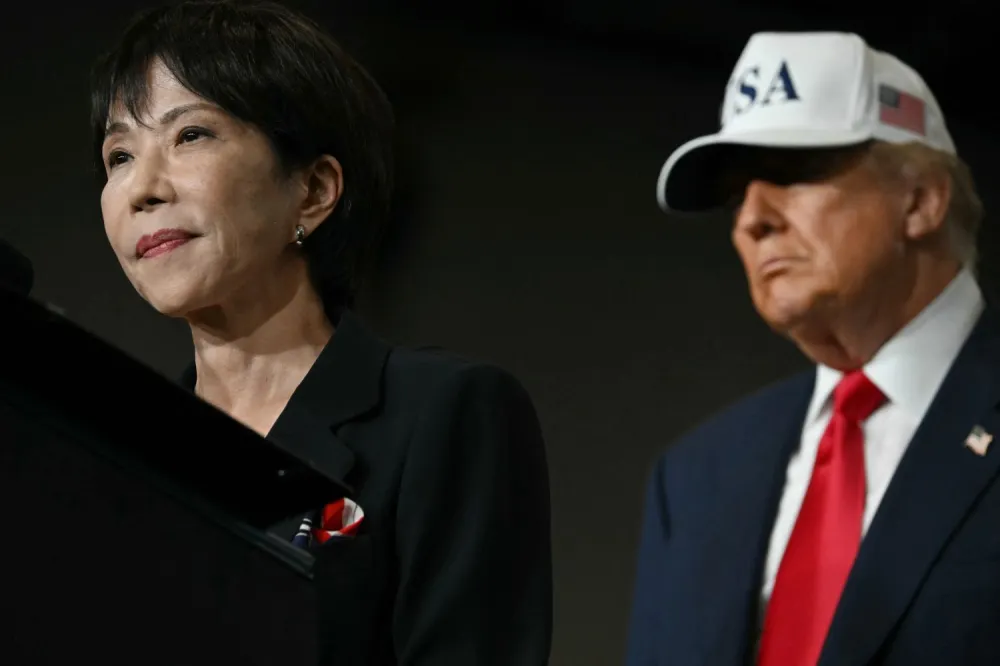Copyright Foreign Policy

The Trump administration’s negotiators are in top shape these days. Within just the past few weeks, the United States clinched trade deals with four members of the Association of Southeast Asian Nations (ASEAN)—Cambodia, Malaysia, Thailand, and Vietnam—and finessed the details of the investment pledges that Japan gave the White House in July. The spirit of all these accords is simple: In return for lower tariffs than those that U.S. President Donald Trump imposed or threatened, these economies are accepting a surprising number and scope of Washington’s demands. Trade deals are usually a great antidote to insomnia. The recent agreements between Washington and Asian economies, however, are different. The fine print shows that these countries made unusual concessions to clinch an accord. The agreements offer clues of how Trump has successfully turned tariff threats into leverage to force partners to invest in the United States, give Washington a say over domestic affairs, and decouple from China. True to his business instincts, Trump has made foreign investment pledges a priority in the trade deals that U.S. negotiators are scouring the world to finalize. The U.S.-Japan agreement is a prime example: The centerpiece of the deal is a promise from Tokyo to invest $550 billion in the United States by the end of Trump’s term in January 2029—an amount roughly equivalent to 15 percent of Japan’s GDP or, perhaps not coincidentally, four years (or one presidential term) of Japanese exports to the United States. Interpretations of the deal diverge drastically on both sides of the Pacific. According to the White House, the “Government of Japan has agreed to invest $550 billion in the United States.” Trump reckons he is “taking in $550 billion and that’s like a signing bonus that a baseball player would get.” Under this interpretation of the agreement, according to my discussions with U.S. officials, a $10 billion investment project from U.S. firms that only garners $4 billion in private financing could be topped up with $6 billion in Japanese taxpayers’ money. Tokyo vehemently disagrees with this view. In July, Japan’s chief negotiator told local media, according to Bloomberg, that the “$550 billion investment framework combines investments, loans and loan guarantees provided by financial institutions backed by the Japanese government.” Of each investment’s profits, 90 percent would go to the United States. Since then, it has emerged that the split could be a more balanced 50-50 until Japan recoups its initial investment and then 90-10 to the United States’ benefit afterward. Leaving these debates aside, three things about Japan’s investment pledge are clear. First, the deal involves seeing Tokyo spending public money to fund private investments on U.S. soil. Second, the United States will eventually earn 90 percent of the payoff. Third, if Japan refuses to make good on its promise (whatever the U.S. interpretation is of it), then the White House can reimpose tariffs on Japanese exports. As a White House official put it, “We intend our trading partners to live up to their commitments, and the President reserves the right to adjust tariff rates if any parties renege.” It is hard to discern why Japan would sign up for such a deal. A first issue is that only Americans will sit in the investment committee that will make final recommendations for projects that Tokyo needs to finance—with Trump alone having the ultimate say. Potential headaches for Japan do not stop here. Public funding suggests that private investors were not interested in the projects in the first place and they may not be profitable. Experts also doubt that the U.S. government has the power to direct foreign money through investment vehicles that Washington controls. If a future administration or Congress determines that the scheme is unlawful, Japan could lose its investments. South Korean President Lee Jae-myung believes that he “would be impeached” if he agreed to similar terms for the trade deal that he is busy negotiating with Washington. Yet he may soon be following in Japan’s footsteps, as the White House is pressuring South Korea to commit to a $350 billion investment package. As U.S. Commerce Secretary Howard Lutnick put it, “The Koreans either accept that deal or pay the tariffs.” Lutnick is, of course, wrong: Not the exporting nation but U.S. companies and consumers pay for U.S. duties. With Japan’s investment pledges in the bag and South Korea’s close to it, Washington then had leeway to focus on its second priority—forcing ASEAN economies to mirror U.S. regulations. The U.S.-Malaysia deal exemplifies this. The agreement pencils in that Malaysia will align with all “unilateral [U.S.] export controls” if Washington asks. That Kuala Lumpur accepted such a clause is odd; Malaysia’s island state of Penang has long thrived on positioning itself as a neutral (read: serving both the United States and China) manufacturing hub for semiconductors. If Trump keeps U.S. export controls on China in place and Malaysia mirrors them, it is not clear how Penang’s chip firms can continue to do business in China. Washington’s demands for partners to align with U.S. rules do not stop here. Malaysia has also agreed to restrict transactions of individuals and companies under U.S. sanctions or on the U.S. Bureau of Industry and Security’s Entity List. That U.S. sanctions have global reach is nothing new, and even absent this agreement, it is hard to imagine that many Malaysian banks would process transactions with individuals or companies that the United States has blacklisted. What’s new is Washington’s open demand that foreign countries mirror U.S. primary sanctions. The digital sector makes up a final area for U.S. regulatory meddling. In its deal, Malaysia committed to never imposing a tax on digital services and to consult Washington before signing digital pacts with other countries. Such U.S. demands do not come as a surprise. Trump has long obsessed over what he considers unfair taxes on U.S. digital platforms. Yet how Malaysia will implement this clause will prove interesting; after all, it just signed up for a digital pact: the ASEAN-led Digital Economy Framework Agreement. The U.S.-Cambodia trade pact illustrates the third U.S. priority in Asia: compelling partners to decouple from China. For starters, Phnom Penh commits to mirroring U.S. tariffs and quotas on any country (read: China); otherwise, a prohibitive tariff of 49 percent, among the highest in the world, will be reimposed on Cambodia’s exports to the United States. The punishment is the same if Cambodia enters into an economic deal with a U.S. foe (again, read: China). Cambodia also consents to providing the United States with information about foreign investors. China is not mentioned, but it is clear that the clause is about Beijing; Chinese firms are the largest investors in Cambodia, providing around half of all foreign direct investment last year. U.S. pressure could soon grow on the decoupling front, with transshipment as a top area of focus. In plain English, this means the rerouting of Chinese exports to the United States via third countries such as Vietnam or Mexico in a bid to circumvent U.S. tariffs on China. ASEAN governments have reason to believe that the United States will soon ask them to tackle this practice. In its deal with Malaysia, Washington has left the section pertaining to this issue blank, giving the United States flexibility to come up with wording that makes transshipped Chinese products ineligible for a lower tariff. In such a case, the business model of the many ASEAN economies that have positioned themselves as trading hubs between China and the United States could go bust. European Union bureaucrats could find some comfort as they pore over these recent deals. In its own agreement with Washington, the EU did not give Washington a fraction of what Japan, Cambodia, Malaysia, and others did. This raises the question of why Asian governments inked such restrictive deals. Granted, the United States is a huge trading partner for East and Southeast Asian economies, and Washington’s security guarantees are key for Japan and South Korea. Perhaps Asian policymakers also hope that Trump will never check whether they make good on their pledges, where Washington’s lack of monitoring and enforcement of trade commitments during Trump’s first term may be instructive. None of these explanations is fully convincing. In the meantime, EU policymakers would do well to ponder how they might respond if Washington starts copy-pasting its demands to Asia into the next round of negotiations with Europe.



